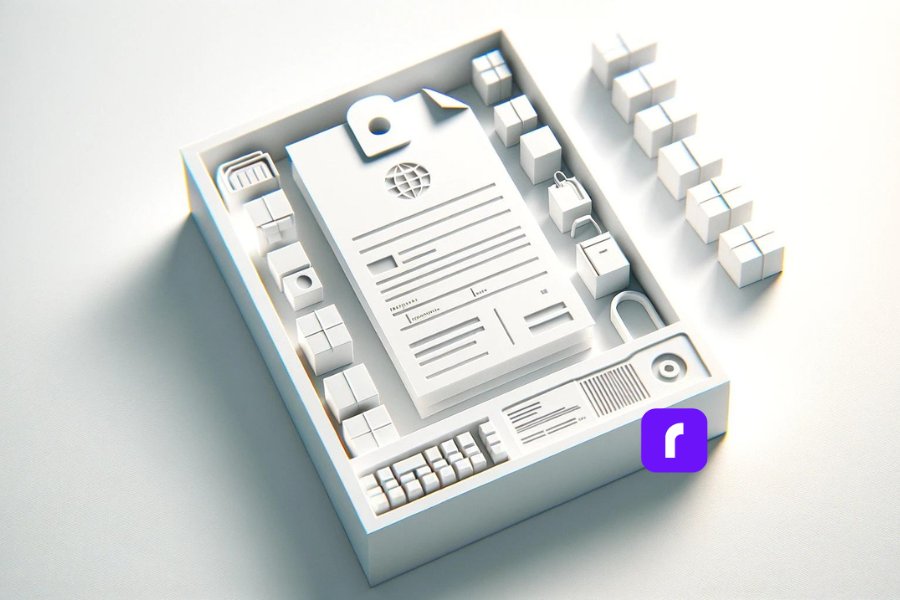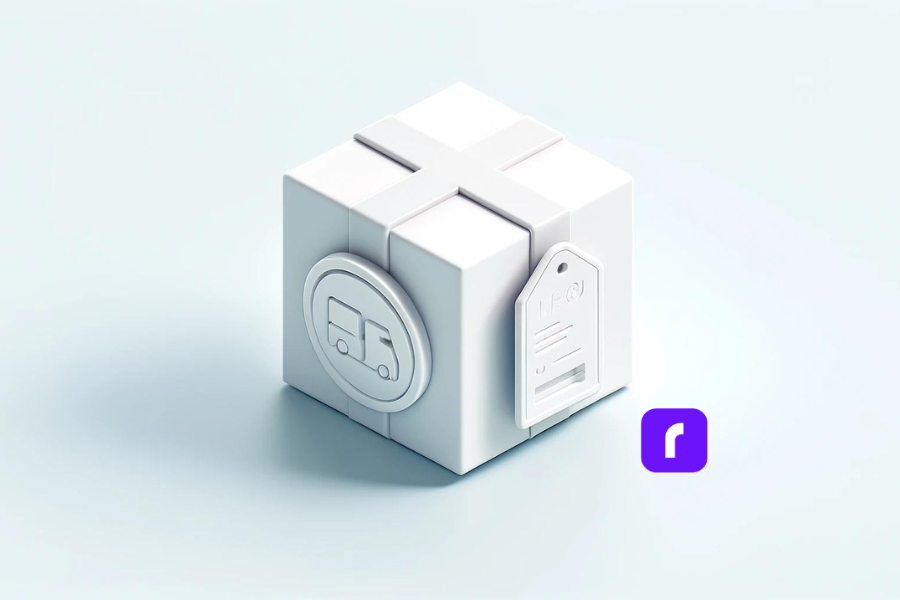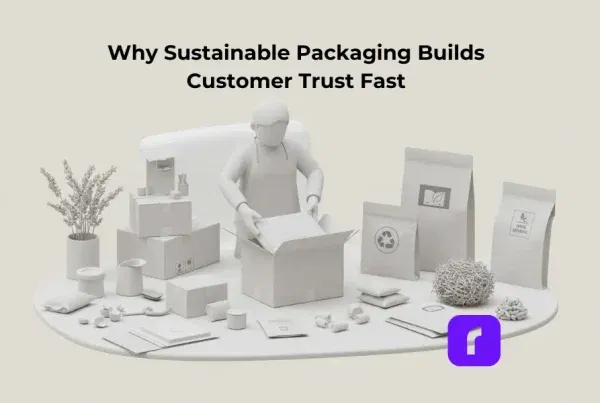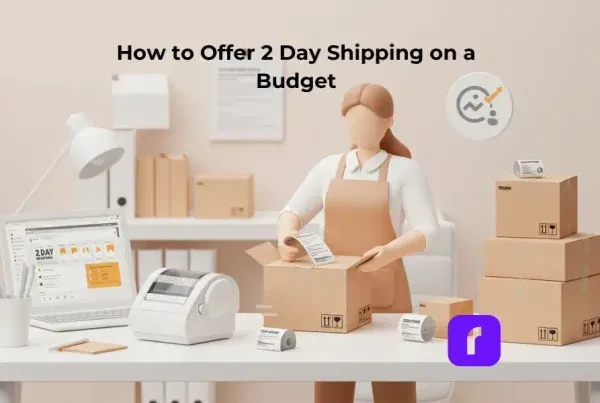We’ve all ordered things online, and when we open the box, we always go straight for the actual item we ordered. But right in front of you, there’s a packing slip or detailed receipt listing the items in the box. Most of us take a quick glance and move on to the product itself. Here’s the deal – these unassuming pieces of paper low-key run the show when it comes to shipping. Businesses ship out tons of orders daily, each packed to the brim. How can you keep track of what’s actually inside those boxes? That’s where the packing slip comes into play.
[ez-toc]
According to the shipping experts, “A packing slip is crucial for businesses because it provides a record of what was shipped, just in case any parcels are damaged or go missing during transit.” Translation? Packing slips act as cool referees, keeping everything legit and accounted for. And honestly, that’s a pretty big deal in the fast-paced world of shipping and logistics.
Your Packing Slip 101

So let’s break it down – what exactly is a packing slip? At its core, a packing slip is an itemized list detailing every item included in a particular package. Nothing crazy, right? But don’t let the simplicity fool you, because that basic info is vital. Packing slips make sure your customers get exactly what they ordered, preventing returns and refunds. These types of shipping documents have been around for ages too. Like, we’re talking all the way back to Ancient Rome where merchants were jotting down cargo deeds aboard their ships. Pretty cool heritage for a humble document.
How it Stacks Up: Packing Slip vs Other Shipping Docs

Before we dive into the nitty-gritty of customization, let’s get one thing straight – a packing slip isn’t the only document that tags along for the shipping joyride. There’s a whole squad of paperwork out there, each doing their own thing. It’s like a shipping version of the Avengers, but less…super.
Packing Slip vs. Shipping Label
The shipping label is sort of the celebrity of the group. It’s right out there on display for all to see with the vital shipping details like the destination address emblazoned across its body. The packing slip, on the other hand, is the more humble, backstage kind of documentation. While a shipping label tells the courier where a package is headed, the packing slip tells you (and the recipient) exactly what’s inside. And look, getting the details wrong can be a real headache-inducer. Case in point? “According to the fulfillment gurus at Falcon, nearly 2% of all shipping invoices contain errors.” That may not sound like much, but when you’re a high-volume operation, those tiny percentages add up quick. To avoid such errors and increase efficiency, it’s recommended to use a wireless label printer that uses thermal technology and doesn’t require ink or toner.
Packing Slip vs. Invoice
Whereas a packing slip is like your honest bestie telling you the unfiltered truth about your package contents, an invoice is more like that subtly shady pal always trying to get you to cough up some cash. The key distinction? A packing slip simply lists the items included, while an invoice requests payment and outlines the nitty-gritty financial deets like amount owed and payment terms. Sure, these two documents are buds that sometimes travel together, but their end goals are vastly different. A packing slip wants transparency, but Ms. Invoice is all about securing the bag.
Packing Slip vs. Bill of Lading
Now, it’s important to note that a packing slip is not the same as a bill of lading. They are two distinct shipping documents that serve different purposes:
- Packing Slip:
- 📦 Created by the shipper/seller and included inside the shipment package.
- 📋 Lists product details like descriptions, SKUs, quantities, etc.
- ✅ Helps the recipient confirm the shipment contents match what was ordered.
- 🚫 Does not serve as a legal contract or document of title.
- 📊 Used more for operational purposes like order fulfillment and inventory management.
- Bill of Lading:
- 📝 Issued by the carrier to the shipper once goods are loaded for shipment.
- 📜 Serves as a receipt of goods, contract of carriage, and may transfer ownership title.
- 🔍 Contains details like shipper, consignee, carrier, goods description, and terms of shipment.
- ⚖️ Legally obligates the carrier to transport and deliver goods as stated.
- 🌐 Required for international shipping and transferring ownership during transit.
While both contain shipment details, a packing slip is an informal document for verifying contents, whereas a bill of lading is a legally binding transportation contract and document of title.
Making it Your Own with Rollo’s Custom Label Design App

Now we’ve covered the basics, it’s time to talk customization and personal flair. Because let’s be real, boring packing slips are a missed opportunity to build brand recognition and offer a more unique unboxing experience.
Enter: Rollo’s Custom Label Design App. This nifty tool lets you elevate your standard packing slips and shipping labels to showcase your business’s signature style and personality. From uploading logos to tweaking colors and fonts, the app gives you full control over transforming those humble delivery documents into on-brand extensions of your company’s vibe.
Speaking of branding, did you know custom packing slips can seriously amplify your professional credibility? Personalizing them with your company name, message, and style isn’t just about aesthetics – it’s an easy win for leveling up your brand identity and consumer experience. Plus, who doesn’t love a little extra panache and personality injected into the otherwise mundane process of receiving and unpacking shipments? It’s like getting a cheeky wink from the brand with every order.
You can access Rollo’s free Label Design App through the web at Rollo Label Design App or by downloading the app from the Google Play Store (Android) or Apple App Store (iOS).
A Step-by-Step Guide to Customization Awesomeness
Enough preamble – let’s walk through how to actually make customized packing slip magic happen with Rollo’s app:
- Access the App: Start by accessing the app through the web or downloading it from the Google Play Store or Apple App Store.
- Choose a Label Size:
- Option 1: Select a pre-existing free label template in standard sizes like 2×1 in, 2×2 in, 4×6 in, etc.
- Option 2: Start with a blank canvas by entering your desired custom label size dimensions.
- Upload Your Assets: Add your logo, color palette, font picks, and any other branding elements you want represented. You can also upload images, QR codes, and barcodes.
- Pick a Design Template: Select from thousands of designs that closely resemble a packing slip and then include the necessary information. Think of this as the blank canvas for your masterpiece.
- Make it Your Own: From here, it’s a personal branding playground. Adjust colors, rearrange elements, incorporate logos or graphics, and tweak every last detail to capture your brand’s essence. Choose from thousands of icons, shapes, and fonts in the app’s library, or utilize pre-made templates as a starting point and modify them.
- Include Vital Order Info: The app lets you include important order information like barcodes and QR codes too. Because melding form and function is always the goal.
- Print Directly from the App: A key advantage of Rollo’s Label Design App is the ability to directly print your custom labels from the app to a Rollo thermal printer (wireless or USB models) without any additional steps. This streamlines the label printing workflow.
- Save and Review: Once you’re happy with your creation, save it and give it one last look before locking it in.
- Hit Print: You’re all set! Just print out those beautifully branded packing slips and let them work their magic.
And if you get stuck along the way, no worries – the app has easy-to-follow tool tips and an intuitive interface to keep things running smoothly.
Introducing Rollo Ship, your all-in-one solution for hassle-free shipping and label printing.
NO MONTHLY SUBSCRIPTIONS.
When you print a custom packing slip with Rollo, the first 200 are on us.
Every next label is just 5 cents.
Schedule pickups, consolidate orders, and print bulk labels.
Up to 90% off UPS, FedEx, and USPS shipping.
Packing Slip Insights and Things to Consider
Practical Considerations:
Responsibility for Preparing Packing Slips: The task of creating and including packing slips typically falls on the warehouse or fulfillment team. These individuals are responsible for pulling and packing the products for shipment, ensuring that each order is accompanied by the correct documentation. For individual online sellers, it’s important to include a packing slip with each shipment to provide the recipient with a detailed list of the items inside the package.
Legal Requirements: While there is no overarching legal mandate requiring packing slips specifically, the Fair Packaging and Labeling Act does require that product information, such as contents and manufacturer details, is clearly conveyed for all consumer commodities. Therefore, while you may not need to use a formal packing slip, the same basic product and order information must be provided in some form with each shipment.
Placement of Packing Slips: It is generally not advisable to place packing slips on the exterior of the package. External placement can lead to the slips getting damaged, lost, or obscured. Additionally, packing slips may contain sensitive information that you wouldn’t want publicly displayed.
Data and Functionality:
Core Details Included on Packing Slips: Packing slips typically include essential order details such as:
- #️⃣ Order number/ID
- 📝 Detailed item descriptions
- 🔢 Quantities of each item
- 👤 Customer name and contact info
- 🏠 Shipping address
- 📦 Any tracking numbers
- 🗒️ Special notes or instructions
Choosing the right shipping document: Despite the efficiency of combining documents, a packing slip cannot serve as a shipping label. Shipping labels require specific data formatting and barcodes that enable carriers to scan and track packages effectively, which packing slips do not provide.
Accounting for Received Shipments: When receiving a shipment, you should record the transaction based on the packing slip contents as a purchase. This increases your inventory asset value and accounts payable liability. Once the actual invoice is issued and paid, the accounts payable liability is cleared out.
The Shipping Sidekick You Didn’t Know You Needed
We’ve covered a ton of ground here, from defining what a packing slip is, to customizing them into branding powerhouses to tackling all the nitty-gritty questions. At the end of the day, a packing slip is an essential document that keeps the whole shipping process and customer experience running smoothly behind the scenes. While it may not be the most glamorous part of the process, its impact is hard to overstate. Let’s recap a few key takeaways:
- 📃 Packing slips provide a legit record of what’s shipped, protecting both businesses and customers
- 🔄 They play a distinct role from other shipping documents like labels and invoices
- 🎨 With a tool like Rollo’s Custom Label Design App, you can transform packing slips into on-brand unboxing delights
- 🌐 There’s a world of nuance in the pragmatic considerations around generating, utilizing and processing packing slips
But perhaps the biggest win of all? The ability for smaller ecommerce businesses and solopreneurs to optimize their shipping operations with smart, professional documentation like customized packing slips.
Final Words
These days, branded unboxing experiences and polished order fulfillment practices aren’t just for the big corporate players anymore. With just a touch of technical know-how and an intuitive tool like Rollo’s, any ambitious merchant can level up their shipping game and customer satisfaction in one fell swoop. So look, packing slips may not be the most riveting topic on the surface. But dig deeper and you’ll find an unsung hero worth celebrating – one that keeps orders detailed, boxes accounted for, and consumer confidence intact. Isn’t it time you showed your shipping sidekick a little more love? After all, great things often ship in the humblest of packages.
Follow Rollo on:
Frequently Asked Questions About Packing Slips
📌 Q: What is a packing slip?
💭 A: A packing slip is a document included with a shipment that lists the items being sent. It is important because it helps both the shipper and the recipient verify that the correct items have been included in the shipment.
📌 Q: How does a packing slip differ from an invoice?
💭 A: A packing slip lists the items in a shipment but does not include pricing or payment information, whereas an invoice includes item prices, total amounts due, and payment terms.
📌 Q: Is a packing slip necessary for all shipments?
💭 A: While not legally required, packing slips are highly recommended for brand awareness, customer experience, accurate order fulfillment, and to avoid discrepancies between what was ordered and what was shipped.
📌 Q: Can a packing slip be used as a shipping label?
💭 A: No, a packing slip cannot serve as a shipping label. Shipping labels contain specific data formatting and barcodes required for carriers to scan and track packages effectively.


